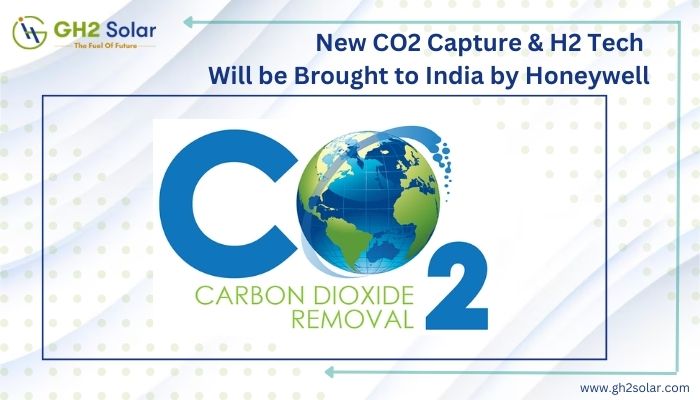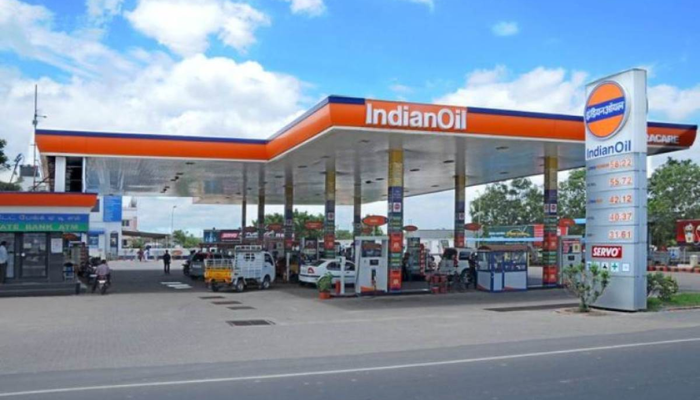A new battery technology from Honeywell that can store and discharge electricity for up to 12 hours in India will outlast lithium-ion batteries. (CO2 Capture & H2 Tech)
According to Ashish Modi, president of Honeywell India, the world’s leading provider of industrial technology solutions, numerous energy transitions and sustainability solutions have been developed by Honeywell International to reduce carbon emissions. These technologies will soon be made available in India.
Hoenywell, a $35 billion company, invented next-generation refrigerants including hydrofluoroolefins (HFO), new-age batteries, avionics equipment, and solutions for carbon capture. It has created new 12-hour-lasting batteries, next-generation HFO refrigerants, renewable ways to recycle waste and make plastic, and catalysts to boost the production of green hydrogen and cut costs, among other things. In 2021, Honeywell’s ESG-focused solutions accounted for more than 60% of its sales.
For the production of green hydrogen, Honeywell has created a novel catalyst-coated membrane (CCMs) technology that guarantees improved electrolyzer efficiency and higher electric current density. According to projections, the new catalyst will lower the cost of the electrolyzer stack by 25%. According to Ashish Modi in an exclusive interview with Fortune India, the company is currently in discussions to apply this technology with manufacturers of electrolysers, including those in India.
With the use of membrane systems, cryogenic fractionation, and pressure swing adsorption (PSA), Honeywell’s green hydrogen technology enables hydrogen manufacturers to efficiently absorb carbon during the hydrogen production process. This uses less energy and recovers 20% more hydrogen than traditional PSA technology. In addition, Honeywell has created the Liquid Organic Hydrogen Carrier (LOHC), a less expensive method for transporting green and blue hydrogen over large distances. Today, Honeywell’s CCUS technologies, which include an advanced solvent carbon capture (ASCC) technology, capture more than 15 million tonnes of CO2 annually. That is the same as the pollution from more than three million operating automobiles. To provide a carbon capture and transportation solution along the Mississippi River region, which has numerous significant, concentrated sources of industrial CO2 emissions, Honeywell and EnLink Midstream are collaborating in the US.
With the help of its innovative “UpCycle” process technology, it is now possible to recycle a wider variety of plastics and create feedstock that has a lower carbon footprint for use in producing recycled plastics. To create a circular economy for plastics, this novel technique can lessen the need for fossil fuels in the production of virgin plastics. Compared to traditional methods of processing waste plastic, such as incineration and landfilling, it reduces CO2e emissions by 77%.
Cooperation between Honeywell India and Navin Fluorine International, a subsidiary of the Padmanabh Mafatlal Group, will allow Honeywell to produce its proprietary “Solstice” line of hydrofluoroolefins (HFO) in India. HFOs are the next-generation refrigerants that can take the place of hazardous HFC and HCFC. The Kigali Amendment to the Montreal Protocol, which mandates the phasedown of HFCs, has spawned several international rules that are increasing demand for more environmentally friendly solutions. For its HFO technology, Honeywell has already spent more than a billion dollars on research, development, and additional capacity. In 2032, India will begin to phase out HFCs.
In 2022, Honeywell unveiled a new technique for producing naphtha, a crucial feedstock for plastics, with a high yield from sustainable feedstocks including recycled cooking oil and animal fats, and a 50%–80% reduced carbon footprint than petroleum feeds. Crude oil and natural gas condensates are the traditional sources of naphtha. Another recent development is ethanol-to-jet fuel (ETJ) processing technology, which enables producers to turn ethanol derived from corn, cellulosic biomass, or sugar into sustainable aviation fuel (SAF). At the Honeywell India Technology Centre in Gurugram, this technology’s development was carried out.
According to him, Honeywell will soon launch a new battery technology in India that can store and release electricity for up to 12 hours, outlasting the capacity of lithium-ion batteries, which can only discharge for up to 4 hours. The battery stores energy that can be used in the absence of wind and solar, during blackouts, and when power grids are at full capacity.
The majority of Indian corporates and top public sector organisations are eager to adopt such technology in the transition, but for India to achieve its sustainability targets, the huge mid-market MSME sector and the supply sector need more assistance. “Many innovative technologies that are relevant to sustainability are still in their infancy and are being evaluated. All of these will take time to commercialise, especially the supply side, which is still developing, adds the author.
As one of the world’s fastest-growing economies, Honeywell India, which generates over $1 billion in revenue annually for its $35 billion parent company Honeywell International, is prepared to seize the opportunity. Sustainability, aviation, defense, digital services, automated vehicles, infrastructure, and cyber security are just a few of the sectors where the corporation will experience significant growth in India. According to Ashish Modi, “We employ about 5,500 engineers in India, and our engineers from India develop the majority of the software for our globally innovative products.”
With three manufacturing facilities in Gurugram, Dehradun, and Pune as well as four technological development centers in Bengaluru, Madurai, Hyderabad, and Gurugram, Honeywell India employs 13,000 people in India. In India, more than 3,000 products, services, and applications are developed.
Source: The Fortune India
For More Updates, Follow GH2 Solar on LinkedIn








